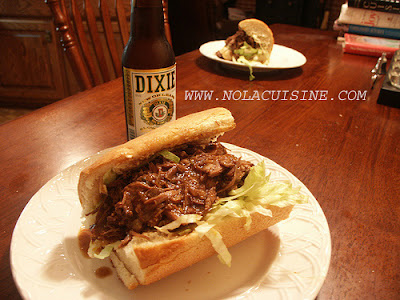My good friend Texas Chef Bill Moran and I recently came up with the idea to showcase some of the great Chefs of New Orleans, past and present. We’re not talking about the superstars like Prudhomme and Lagasse, but the somewhat lesser known New Orleans Chefs and cooks that, although not nationwide superstars, are heroes to anyone who has had the pleasure of tasting their top notch cooking. In addition to a bio on each Chef, we will have a follow up post with a recreation of a dish he/she is most famous for, in this case Austin Leslie’s Fried Chicken Recipe. I’m sure mine won’t be as good as theirs, but I will do my best. Special thanks to Jason Perlow from Egullet for letting us use his wonderful photo.
For the many who never got to experience the late Austin Leslie’s expertise, he was one of the great, real Creole Chefs in the country. His long tenure at Chez Helene got him recognized by many as, “The Godfather of Fried Chicken” but he was more than adept at the other facets of Creole cooking like gumbo, stuffed peppers and many others.
Austin Leslie was born in New Orleans on July 02, 1934, and he began his food career as a boy, delivering herbs, peppers, and celery to his neighbors in the Lafitte projects. As a teen he began delivering fried chicken by bicycle for Portia’s Fountain on S. Rampart Street. As Leslie said in John T. Edge’s book, Fried Chicken: An American Story, “Back then, that was the black Bourbon Street. They were always telling me I was too little to work Rampart, but I proved myself. The owner Bill Turner, he looked after me, he educated me on how restaurants worked. That’s where I picked up a lot of what I know about fried chicken, where I learned how to season it right.”
In 1952 Leslie left Portia’s and his home town for a crack at business school, but returned home the next year, working for a time at Portia’s and then in a sheet metal shop. When times were slow at the shop he also worked at his Aunt Helen DeJean Pollack’s restaurant, Howard’s Eatery on Perdido.
In 1959 Leslie began to come into his own, working as assistant Chef at the restaurant in D.H. Holmes Department Store on Canal. There he learned from Chef Russell about Haute Cuisine and the classic Creole dishes that New Orleans is famous for. “I had grown up walking by there, hearing the dishes clatter and smelling the food, and then all of the sudden I was working in that big kitchen. I learned how to make oysters Rockefeller and shrimp remoulade.”
In 1964 Austin’s Aunt Helen moved her Eatery to 1540 N. Robertson Street off St. Bernard, and added an e to her name, calling the restaurant Chez Helene, for a touch of class. Leslie came along, working at the beginning as Co-Chef with Aunt Helen’s brother Sidney DeJean. Leslie brought along what he learned at D.H. Holmes, and combined those dishes with some of his Aunt’s menu items, this was the beginning of the cuisine he became famous for: Creole-Soul.
In 1975 Aunt Helen decided to retire and sold Chez Helene to her nephew Austin. The small unpretentious neighborhood restaurant, became known for wonderful Oysters Rockefeller served on bent tin pie plates, mustard greens, stuffed peppers, fried chicken livers, buttery cornbread and the best Fried Chicken around. Chez Helene built a steady clientele of black and white, tourists and locals alike, all coming together in the little restaurant for it’s excellent cooking. As Leah Chase said, “It was just good old Creole food, good old-time New Orleans food, and he was good, damn good. You couldn’t fry a chicken better than Austin. You couldn’t stuff a pepper better than Austin Leslie.”
Leslie’s persona also grew in popularity, with his big smile, mutton chop sideburns, a diamond crusted crab pendant, trademark yachting cap and the gift of gab. Business deals came out of the woodwork, including French Quarter and Chicago versions of Chez Helene, and a chain of Fried Chicken restaurants. He also published a cookbook in 1984 titled Chez Helene: House of Good Food. Leslie said, “Seems like everyone wanted to use my name to sell this, my face to sell that, I made the mistake of listening.”
In 1987 Chez Helene drew the attention of producer Hugh Wilson and actor Tim Reid, best known for his roll as Venus Flytrap on the show WKRP In Cincinnati. After dinner at Chez Helene the two thought the restaurant would be a perfect setting for a hit television show, Leslie signed on as a consultant and later ran television ads calling Chez Helene the inspiration for Frank’s Place. Frank’s Place aired in the Spring of 1987 to rave reviews, but was cancelled after a year, citing low ratings and a huge budget. This was the beginning of the end of Chez Helene. Business at the original Chez Helene slowed and the other restaurants began to close, one by one. As Leslie told Edge, “I knew I could ride it out, that it all would pass, I was still cooking, still had my little restaurant. The real problem was that I was sitting on dynamite. The dope fiends and pushers were moving into the neighborhood. Now don’t get me wrong, I know the streets. I’ve lived my whole life around pimps and whores. They’ve got a job to do same as me. But this was something different.”
Leslie declared bankruptcy in 1989 and the last Chez Helene closed its doors for good in 1994. The building that once housed the original restaurant burned down shortly after. Here is a picture of the lot where Chez Helene used to stand.
Leslie worked around town for a time, popping up in different restaurants around the city, like The Bottom Line and The Basin Street Club, but in 1995 he answered a want ad for a “Creole and Cajun Chef”. He hired on, not as Executive Chef or Sous Chef but as the Fry Cook at a funky little restaurant called Jacques-Imo’s (pics at Egullet), owned by restaurateur Jack Leonardi. Their odd couple partnership became legendary on the New Orleans restaurant scene. Jack Leonardi said, “I would have never really done the Creole-soul thing and the fried chicken if it hadn’t been for Austin, he also just taught me a lot about things, not just running a restaurant. He had such a big menu at Chez Helene. It was like a Chinese restaurant menu. He taught me how you could do that, how to incorporate sauces and stuffings in all sorts of different ways.”
At Jacques-Imo’s, Leslie turned his signature Fried Chicken on to a new generation of diners, finishing each order with a persillade (minced garlic and parsley) and a slice of dill pickle. During this period, Leslie also helped open a restaurant called N’Awlins in Copenhagen, Denmark, and in 2000 he released his second cookbook, Austin Leslie’s Creole Soul: New Orleans Cooking with a Soulful Twist. In October of 2004 Austin left Jacques-Imo’s saying, “I didn’t move away from Jack because of money. I moved away from Jacques-Imo’s because I wanted to get away from frying. I’m going to die. But I’m not going to die over that fryer.”
In 2005 he signed on as Executive Chef at Pampy’s Creole Kitchen (pics at egullet) owned by Stan “Pampy” Barre. There he taught a new generation of cooks some of his secrets, and could often be seen talking with the diners in the front of the house. When asked about retirement he said, “I’ll never quit, I’ll work as long as there is breath in my body.”
In the midst of the flooding in the wake of Hurricane Katrina, the 71 year old Austin Leslie, like many others, was trapped in his attic for 2 days in the stifling humidity and 98 degree heat. He was later rescued and relocated to the New Orleans Convention Center, until being taken to Atlanta. The last time Barre spoke with Leslie he was anxious to get back to work. Barre said, “Austin called me two days ago, and we had an extensive conversation. He wanted to get back to work. He wanted to get back into the kitchen.” On September 28 he was admitted to an Atlanta hospital for a high fever and died the next day.
On Sunday October 9, 2005, Austin Leslie was honored with the first post-Katrina New Orleans Jazz Funeral. Two dozen marchers carried black & white photos of Leslie (the one seen above, taken by Jason Perlow of Egullet), marched through the devastated Seventh Ward to honor the legendary Chef. The procession started at Pampy’s, taking a route that passed the former site of Chez Helene, and ending at the Backstreet Cultural Center at 1116 St. Claude Street. Stan “Pampy” Barre said the crowd was “going to march into New Orleans and dance him into Heaven.”
Related Links:
Part 2 to this post: Austin Leslie’s Fried Chicken Recipe
Pictures of Austin Leslie’s Jazz Funeral at Nola.com
Jason Perlow’s pics from Jacque-Imo’s and Pampy’s
Pampy’s Creole Kitchen Website (Pampy’s was destroyed by flooding)
Obituary at Egullet
Austin Leslie Obituary thread at Mr. Lake’s Nonpompous New Orleans Food Forum.





